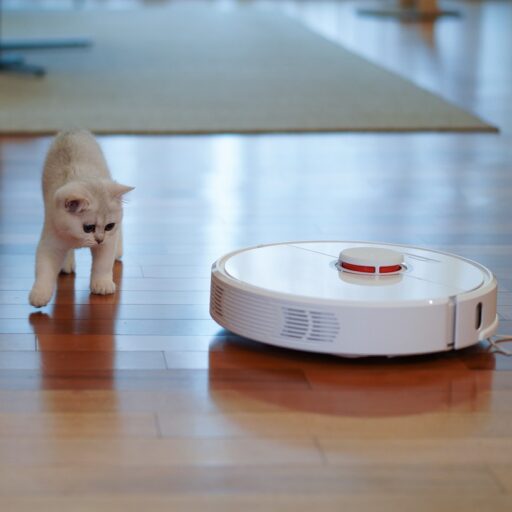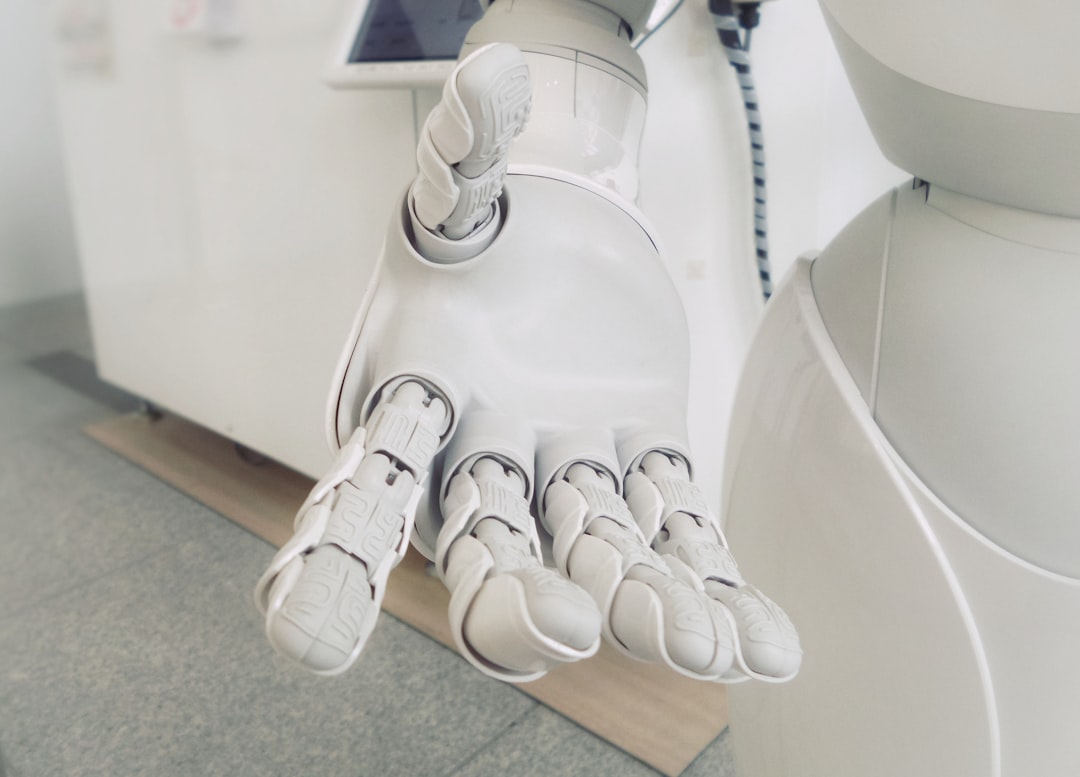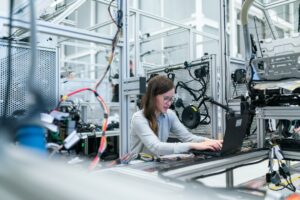Support our educational content for free when you purchase through links on our site. Learn more
How Do You Program a Robot From Scratch? [2023]
Are you ready to dive into the exciting world of robotics and learn how to program a robot from scratch? Look no further! Our team at Robot Instructions™ has got you covered. In this comprehensive guide, we will walk you through the process of programming a robot, step by step. Whether you’re a beginner or an experienced programmer, we’ll provide you with all the information you need to get started on your robot programming journey.
Table of Contents
- Quick Answer
- Quick Tips and Facts
- Why You Should Build Your Own Robot
- How Hard Is It to Build Your Own Robot?
- How Much Does It Cost to Build Your Own Robot?
- What Do You Need to Build Your Own Robot?
- Building Your Robot From Scratch: A Step-by-Step Guide
- Do You Need Coding Skills to Create a Robot?
- How to Build Your Own Robot FAQ
- Conclusion
- Recommended Links
- Reference Links
Quick Answer
To program a robot from scratch, you will need to follow these steps:
- Choose a programming language suitable for robotics, such as Python or C++.
- Learn the basics of the chosen programming language.
- Understand the robot’s hardware and sensors.
- Write code to control the robot’s movements and interactions.
- Test and debug your code.
- Iterate and improve your robot’s programming.
Now, let’s dive deeper into each step and provide you with more detailed information.
Quick Tips and Facts
- Programming a robot from scratch requires a combination of coding skills, understanding of hardware, and problem-solving abilities.
- Python and C++ are popular programming languages for robotics due to their versatility and extensive libraries.
- Familiarize yourself with the robot’s hardware components, such as motors, sensors, and actuators, as they will be crucial for programming.
- Start with simple projects and gradually increase the complexity as you gain more experience.
- Join online communities and forums dedicated to robotics to learn from experienced programmers and share your progress.
Why You Should Build Your Own Robot
Building your own robot can be an incredibly rewarding experience. Here are some reasons why you should consider it:
- Creativity and Innovation: Building a robot from scratch allows you to unleash your creativity and bring your ideas to life. You have the freedom to design and customize every aspect of your robot.
- Learning Opportunity: Robotics combines various disciplines, including programming, electronics, mechanics, and even artificial intelligence. By building your own robot, you will gain valuable knowledge in these areas.
- Problem-Solving Skills: Building and programming a robot requires you to think critically and find solutions to challenges along the way. This process enhances your problem-solving skills and encourages a growth mindset.
- Fun and Entertainment: Let’s not forget the sheer joy and entertainment that comes with seeing your creation come to life. Building and programming a robot can be a fun hobby that keeps you engaged and motivated.
How Hard Is It to Build Your Own Robot?
The difficulty level of building your own robot depends on various factors, such as your prior experience, the complexity of the robot, and the resources available to you. Here’s a breakdown of the difficulty levels:
- Beginner: If you’re new to robotics and programming, starting with a simple robot kit is recommended. These kits often come with step-by-step instructions and pre-written code, making the process more accessible.
- Intermediate: Once you have a basic understanding of robotics, you can start building more complex robots. This may involve designing your own robot chassis, integrating sensors, and writing custom code.
- Advanced: For experienced programmers and robotics enthusiasts, building advanced robots with complex functionalities can be a challenging yet rewarding endeavor. This may involve advanced programming techniques, machine learning, and integrating multiple sensors and actuators.
Remember, building a robot is a continuous learning process. Don’t be discouraged by challenges along the way, as they are opportunities for growth.
How Much Does It Cost to Build Your Own Robot?
The cost of building your own robot can vary significantly depending on the complexity of the robot and the components you choose. Here’s a breakdown of the essential components and their average prices:
| Component | Average Price Range |
|---|---|
| Microcontroller | $10 – $50 |
| Motors | $5 – $50 (each) |
| Sensors | $5 – $100 (each) |
| Actuators | $10 – $100 (each) |
| Power Supply | $10 – $50 |
| Chassis | $10 – $100 |
| Miscellaneous | $10 – $50 |
Keep in mind that these prices are approximate and may vary depending on the specific components and brands you choose. Additionally, advanced robots with specialized features may require more expensive components.
What Do You Need to Build Your Own Robot?
To build your own robot, you will need the following essential components and tools:
- Microcontroller: A microcontroller acts as the brain of your robot, controlling its functions. Popular microcontrollers include Arduino and Raspberry Pi.
- Motors: Motors are responsible for the robot’s movement. Depending on your robot’s design, you may need DC motors, servo motors, or stepper motors.
- Sensors: Sensors provide your robot with the ability to perceive its environment. Common sensors include ultrasonic sensors, infrared sensors, and gyroscopes.
- Actuators: Actuators are devices that enable your robot to interact with its surroundings. Examples include grippers, robotic arms, and wheels.
- Power Supply: Your robot will need a reliable power source, such as batteries or a power adapter, to operate.
- Chassis: The chassis serves as the physical structure of your robot, providing support for the components. It can be made of various materials, such as plastic, metal, or even LEGO®.
- Miscellaneous: Depending on your robot’s design, you may need additional components like breadboards, jumper wires, resistors, and capacitors. Basic tools such as screwdrivers, pliers, and a soldering iron are also useful.
Remember to choose components that are compatible with each other and align with your project requirements.
Building Your Robot From Scratch: A Step-by-Step Guide
Now, let’s walk you through the process of building your own robot from scratch:
- Define Your Robot’s Purpose: Start by identifying the purpose and functionality of your robot. Will it be a line-following robot, a robotic arm, or an autonomous rover? This will guide your component selection and programming.
- Design Your Robot: Create a rough sketch or 3D model of your robot’s design. Consider the placement of components, the size of the chassis, and any specific requirements for your project.
- Gather Components: Purchase the necessary components based on your robot’s design and functionality. Refer to the previous section for a list of essential components.
- Assemble the Chassis: If your robot requires a physical structure, assemble the chassis according to your design. This may involve attaching motors, sensors, and other components to the chassis.
- Connect Components: Connect the microcontroller, motors, sensors, and actuators according to the manufacturer’s instructions. Use jumper wires and breadboards for easy prototyping.
- Write the Code: Depending on your chosen programming language, write the code to control your robot’s movements and interactions. Break down the code into smaller functions for better organization.
- Test and Debug: Test your code and make adjustments as needed. Use debugging techniques to identify and fix any issues or unexpected behavior.
- Iterate and Improve: Continuously iterate on your robot’s design and programming. Experiment with different algorithms, sensors, and functionalities to enhance its capabilities.
Remember, building a robot from scratch is an iterative process. Don’t be afraid to make mistakes and learn from them. Each iteration will bring you closer to a fully functional robot.
Do You Need Coding Skills to Create a Robot?
Yes, coding skills are essential for creating a robot from scratch. Programming allows you to control the robot’s movements, interact with sensors and actuators, and implement advanced functionalities. Here are some programming languages commonly used in robotics:
- Python: Python is a versatile and beginner-friendly language widely used in robotics. It has a large community and extensive libraries for robotics applications.
- C++: C++ is a powerful language commonly used in robotics for its performance and low-level control capabilities. It is ideal for advanced robotics projects.
- Arduino: Arduino uses a simplified version of C++ and is popular for beginners due to its ease of use and extensive online resources.
While programming skills are necessary, don’t let the learning curve discourage you. Start with simple projects and gradually increase the complexity as you gain more experience. Online tutorials, forums, and books can be valuable resources for learning programming concepts and techniques.
How to Build Your Own Robot FAQ
Q: How do I start robotics programming?
To start robotics programming, follow these steps:
- Choose a programming language suitable for robotics, such as Python or C++.
- Learn the basics of the chosen programming language.
- Familiarize yourself with robotics concepts, hardware, and sensors.
- Start with simple projects and gradually increase the complexity.
- Join online communities and forums to learn from experienced programmers and share your progress.
Read more about “How Do You Program a Robot From Scratch? [2023]”
Q: Which programming language is used for robots?
Python and C++ are commonly used programming languages for robotics. Python is beginner-friendly and versatile, while C++ offers performance and low-level control capabilities. Other languages like Arduino’s simplified version of C++ are also popular for beginners.
Read more about “[2023] How to Make a Simple Robot: The Ultimate Guide”
Q: What do you need to build a robot from scratch?
To build a robot from scratch, you will need essential components such as a microcontroller, motors, sensors, actuators, power supply, chassis, and miscellaneous components like breadboards and jumper wires. Tools like screwdrivers, pliers, and a soldering iron are also useful.
Read more about “How Do You Program a Robot From Scratch? [2023]”
Q: Can I build a robot without coding skills?
While coding skills are essential for creating a robot from scratch, there are beginner-friendly platforms like Arduino that use simplified versions of programming languages. Starting with these platforms can help you learn coding while building your robot.
Read more about “How Do You Program a Robot From Scratch? [2023]”
Q: How long does it take to build a robot from scratch?
The time it takes to build a robot from scratch depends on various factors, including your experience, the complexity of the robot, and the resources available to you. Simple robots can be built in a few days, while more advanced projects may take weeks or even months.
Read more about “How Do You Program a Robot From Scratch? [2023]”
Conclusion
Congratulations! You now have a solid understanding of how to program a robot from scratch. Building your own robot is a rewarding journey that combines creativity, problem-solving, and programming skills. Remember to start with simple projects, learn from online resources and communities, and continuously iterate and improve your robot’s design and programming.
So, what are you waiting for? Dive into the world of robotics and start building your dream robot today!
Recommended Links
- Shop Robotics Components on Amazon and Walmart
- Shop Arduino Kits on Amazon and Walmart
- Learn More About Robot Programming on Robot Instructions™
Reference Links





